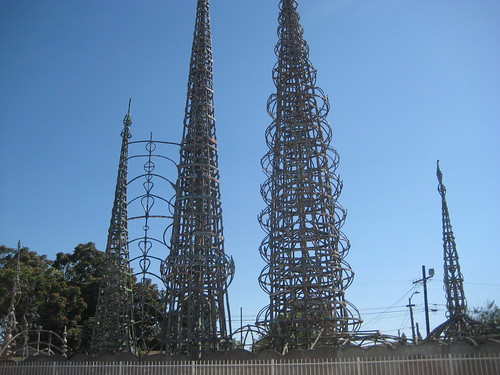Hidden cameras and secret trackers reveal where Amazon returns end up | CBC News – interesting aspect of Amazon’s business model. It does make me wonder how much of a drag is returns on Amazon’s business? Retail returns are usually running at 10 percent of products bought. With e-tailing; this rate is thought to be as high as 40 percent according to the programme. That sounds like an extremely high rate of returns. Back when I was in college 25 percent was quoted as a returns rate for catalogue businesses.
Inside Palantir, Silicon Valley’s Most Secretive Unicorn – “Where you get into trouble is when the software gets so complicated that you have to send people in to manage it,” said one former CIA official who is complimentary of Palantir. “The moment you introduce an expensive IT engineer into the process, you’ve cut your profits.” Palantir, it turns out, has run headlong into the problem plaguing many tech firms engaged in the quest for total information awareness: Real-world data is often too messy and complex for computers to translate without lots of help from humans – to be fair enterprise software companies have always sold a good deal of smoke and mirrors in terms of over-exaggerated claims – sounds a lot like IBM’s Watson in this respect
Apple’s New 5G IPhones May Be Left on the Shelf | Yahoo! Finance – 5G lacks a killer app for consumers
Exposure to TV ads up 15% during height of lockdown – Even children were watching more broadcast TV and exposed to a greater volume of advertising in the weeks following the lockdown in March.
Alibaba Group – investors day presentations – some interesting insight into Chinese e-tailing, retailing and internationalisation of these models
Blockbuster Chinese games said to boycott Huawei and Xiaomi app stores over revenue tax | South China Morning Post – two Chinese gaming startups, Lilith Games and miHoYo, said they won’t sell their would-be autumn hits via app stores pre-installed on smartphones made by Huawei and Xiaomi. Instead, they’ve opted for stores charging smaller fees or none at all—including Apple’s App Store, which levies the same 30% charge in China as it does everywhere else. While the duo didn’t say outright they were unhappy about the 50% rule set by the Chinese Android stores, many gamers and developers see them as the good guys stepping up against tech’s behemoths
How to Monitor Facebook Pages – Meltwater Help Center – now allows users to monitor Facebook pages that they’re in charge of. The limit is 50 specific Facebook pages. It pulls out the Facebook analytics data into a Meltwater interface
European Semiconductor Sales Drop, Global Sales Rise – EE Times Europe – not surprising given the disruptions to manufacturing
Google Chrome remains China’s most popular web browser, even with Google search and other apps blocked | South China Morning Post – consumer backlash against some domestic browsers can be attributed to their aggressive user acquisition tactics, such as being deliberately difficult to uninstall. But he said that a shift in consumer tastes might also play a role. When Chinese internet companies first started designing websites and applications in the late 90s, the minimalist aesthetic was unpopular, he said a friend told him at the time. “Chinese consumers wanted stores where all the merchandise was crammed onto the shelves at maximum capacity, with narrow aisles where people were just bumping into one another,” he said. “It felt like plenitude.” “Those early design preferences endured for a surprisingly long time online, and I think there’s still a much higher tolerance for it than we’d see in the US or other Western countries,” he added. “I think as consumers get more sophisticated, though, they’re looking for a retail experience that doesn’t feel like a fire sale all the time.”
Opinion: How Can Luxury Brands Successfully Price In The Post-COVID World? – In these challenging times of lockdowns and demand contraction, luxury brands have increased – even more than usual – the prices of their bestselling products to offset part of the compression of margins due to the pandemic. Take for instance, Chanel which earlier this year confirmed it had brought the prices up of its iconic handbags (11.12, 2.55, Boy, Gabrielle) ranging between 5 and 17 percent in euros and Louis Vuitton which also raised the prices of some of its products in March and May. It is not a surprise that brands like Chanel, Louis Vuitton, Hermès and Dior, whose handbags are products that are considered iconic and perceived by consumers as investment pieces, can be more bold in increasing prices to protect their margin. But not all companies have such strong brand positioning and therefore cannot raise their prices so easily.
Bulgari CEO Jean-Christophe Babin: “Millennials Don’t Want Formal Luxury.” | Luxury Society – I suspect that this is across age cohorts but the blend of streetwear and luxury is a key sign of it
Is online advertising subprime? Contagious – interesting thought experiment
South Korean Activists Accuse China of Using Huawei to Hack Their Election | Daily Beast – of course Samsung is looking to pick up 5G smartphone and infrastructure sales from Huawei….
New info about Facebook-Instagram deal delays antitrust report: source | CNBC – it will be interesting to see what comes out
Axios China – Top German official hushed up report on China’s influence – not terribly surprising when you read books like Hidden Hand. More China related posts here.
The end of the American internet — Benedict Evans – more precisely. The end of Americans being the dominant users and culture on the internet
Brussels drafts rules to force Big Tech to share data | Financial Times – grab the popcorn
State of AI Report 2020 – interesting report on the hype
The great uncoupling: one supply chain for China, one for everywhere else | Financial Times – Untangling supply chains that have built up over a generation is a complex and difficult task and the multinational companies which sell into the Chinese market will stay and even expand. But if companies that once used the mainland to make goods for export do decide to depart in significant numbers, it will represent a major reversal of five decades of economic integration between the US and China


